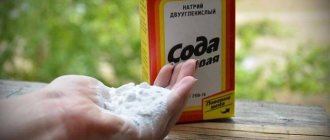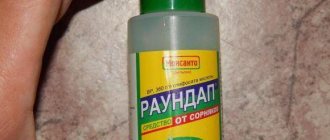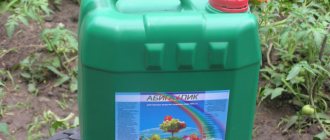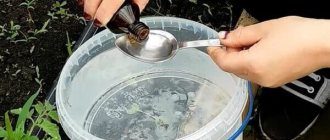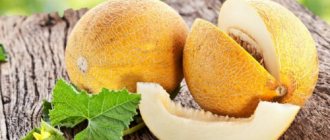What kind of plant is this “momordica”
A plant from the Pumpkin family has a very unusual appearance and structure. Momordica bears elongated oval fruits with a wrinkled skin, covered with thorny growths, and with dark red pericarp grains inside, covering brown seeds. When ripe, the fruits of the plant crack and the juicy pulp is exposed.
The fruits are similar to both a fruit and a vegetable and are considered close relatives not only of pumpkins, but also of zucchini and cucumbers.
Momordica is a close relative of cucumbers and zucchini.
Where and how does momordica grow?
The exotic momordica, also called bitter melon or Indian pomegranate, grows mainly in the tropics. You can meet it in India, China, Southeast Asia and South America, the Philippines, and Russian Crimea.
The fruits grow on large vines reaching about 5 m in length. The leaves are carved, light green, slightly “biting” your fingers when touched, the flowers are bright yellow, with a jasmine aroma.
Planting seedlings in the ground
Seedlings are planted after the threat of return frosts has passed and the soil has warmed to 10-12 degrees.
The plant does not tolerate even light frosts. A drop below 10 degrees is also detrimental.
Conditions for growing momordica in open ground:
Sunny locations with light shade at midday. The area should be protected from the wind.
Moisture- and air-permeable fertile soils with a neutral or slightly acidic reaction. The best option is well-fertilized loamy soils that have a neutral environmental reaction.
Momordica is a fairly actively growing vine; between plants you need to leave 75–85 cm of free soil.
To make the seedlings better tolerate the procedure, spray them with Epin the day before. Try to carefully transfer the plant into the hole so as not to damage the root system.
After planting seedlings in the ground:
- Immediately after planting, water thoroughly and monitor soil moisture for a week.
- For the first 2–3 days, shade the seedlings from direct sunlight.
- The liana can reach 2-3 meters in length, so it is necessary to provide supports.
You can also grow the plant in 5-10 liter pots. In an apartment, on a balcony or loggia, momordica grows without problems. Momordica is a bee-pollinated plant. Therefore, when growing at home, you will need to pollinate it manually. A female flower can be identified by the presence of an ovary.
Value and composition of momordica
The plant contains many valuable chemicals, which are responsible for the beneficial properties of momordica. In particular, the pulp contains:
- vitamins C, B and A;
- tocopherol;
- rare vitamin F;
- calcium and phosphorus;
- folic acid;
- alkaloid momordicine;
- fixed oils;
- substance charantin;
- amino acids and saponins;
- glycosides, phenols and resins;
- alimentary fiber.
The value of the product is represented mostly by carbohydrates - about 3 g of the total volume. The fruit contains only about 0.8 g of protein, and about 0.1 g of fat.
Calorie content of momordica
The plant is highly valued for its low calorie content. There are only about 19 kcal in 100 g of product; it is impossible to gain weight by consuming momordica.
When fresh, the vegetable is eaten mostly unripe.
Feeding and pests
For feeding, complex fertilizers are used, which contain calcium, potassium and nitrogen. It is effective to use a mixture of cow manure and bird droppings for the plant in a ratio of 1 to 2. For one bush, 1 liter of this mixture is diluted in 10 liters of water. Feeding should be done once every 3 weeks.
Pests and diseases that affect momordica: aphids, gray mold, powdery mildew and bacteriosis. If there are affected plants, powder them with wood ash and spray them with a solution of water and colloidal sulfur in a proportion of 40 g per bucket of water. You can use a weak infusion of mullein. If the case is advanced, copper oxychloride is used.
Momordica is a unique plant that will transform your garden or summer cottage and provide enormous health benefits.
How to eat momordica
It is recommended to consume the pulp of the fruit unripe, in which case the taste properties will be more pleasant. Ripe momordica is distinctly bitter, so before eating it is usually boiled and added to other dishes as a seasoning.
As for the seeds of the plant, they have a sweet taste, but are quite hard in structure. Before use, they need to be fried, this will soften the seeds, and they can be used in a salad or vegetable stew. The leaves of the plant are also often added to salads, soups and main courses.
What does momordica taste like?
When fresh, unripe fruits taste like cucumbers. Ripe momordica is compared mainly to pumpkin, but more bitter. Some gourmets claim that the pulp is similar to both persimmon and melon.
Momordica: fruit or cucumber?
Answering the question “What is momordica – a fruit or a cucumber?”, we can say that it is both. Externally, the plant looks like a vine with leaves similar to cucumber and grape. Momordica combines the properties of cucumber, pomegranate and pumpkin. People gave the plant many names: crazy cucumber, Indian pomegranate, crazy pumpkin, balsamic pear. The word “mad” was given for the plant’s ability to shoot its seeds in different directions. Momordica has not only extraordinary beauty, but also the ability to overcome many ailments.
Useful properties of the momordica plant
The pulp and seeds of the plant not only have an unusual, pleasant taste. Consuming the product is good for health and can bring relief from many diseases. The plant has anti-inflammatory properties, has a good effect on blood circulation and metabolism, and strengthens the immune system.
The product is used to treat:
- colds and viral diseases;
- measles;
- hepatitis A;
- scabies and psoriasis;
- parasites;
- liver and kidney diseases.
The plant helps reduce cholesterol levels, improves blood composition and accelerates blood circulation, and serves as a high-quality prevention of strokes and heart attacks.
Important! The substance charantin in the plant has a beneficial effect on the pancreas and promotes the production of insulin. The plant is especially beneficial for diabetes.
Indian pomegranate can be used to treat diseases
Medicinal properties of momordica leaves
The leaves of the plant contain many vitamins and antioxidants. Decoctions and infusions based on momordica leaves are used to treat metabolic system failures, strengthen the heart and blood vessels, and improve immunity.
We recommend reading: What foods are good for the human heart and blood vessels: list, top 15 best
Useful remedies based on the leaves help with skin inflammation and joint ailments. You can drink decoctions for the treatment of hypertension and weight loss, for the prevention of cancer and rejuvenation of the body.
Features of the plant
Momordica is called as many different names as: Indian pomegranate, Chinese melon, crazy cucumber. It is distinguished by its unusual appearance, especially for fruits. The culture grows in the form of a liana.
There are almost 20 species of this crop in the world.
For our area, momordica is an exotic plant, but it has taken root well and is successfully grown in garden plots. All parts of the mad cucumber are edible. They eat unusual fruits with seeds, foliage and thin but strong shoots. In an adult plant, they reach a length of 2 to 4 m. The leaves of the plant are rich green, carved.
Bisexual flowers:
- The male flower is larger, bright yellow, blooms on a long stalk.
- Female flowers are smaller and have a short stalk.
Unusual fruits with pimples grow up to 25 cm in length, their diameter is about 6 cm. When green, they are rich in color, similar to a cucumber, and then turn orange, reminiscent of a small melon. Inside the fruit has red pulp with a pleasant taste. In the middle of each there are about 30 dark burgundy seeds. They are very similar to pomegranate seeds, only with a thick skin.
What are the health benefits of momordica?
The plant is used in both folk and official medicine. When consumed, it brings the following beneficial effects to the body:
- cleanses blood vessels and strengthens their walls, preventing heart attacks and strokes;
- improves metabolic processes, helps with digestive problems and liver diseases;
- has a diuretic effect and helps with kidney diseases;
- effectively fights inflammatory processes in the body and skin diseases;
- helps with colds and asthma;
- has a beneficial effect on arthritis;
- improves the condition of the reproductive system;
- reduces glucose levels and improves pancreas function.
The plant is used to improve immunity and to prevent vitamin deficiency. Eating momordica can prevent the development of malignant tumors.
For men
The beneficial properties of the product for men are very diverse. First of all, momordica helps protect against early strokes and heart attacks; representatives of the stronger sex are especially prone to them. In addition, the product alleviates inflammatory processes of the genitourinary system and improves potency.
Indian pomegranate pulp has anti-inflammatory properties
The plant can be used to protect the liver. The product prevents the development of hepatitis and cirrhosis, therefore it is especially valuable for those who smoke and drink alcohol.
For women
For women, the benefit of momordica is its beneficial effect on digestion. Low-calorie fruits do not lead to weight gain, but they help get rid of extra pounds and remove toxins.
You can take momordica to relieve painful periods and improve libido. The plant has a very good effect on a woman’s appearance. Even if you simply eat fruits, seeds and leaves, your skin and hair will quickly become more attractive.
Is it possible to take momordica during pregnancy?
Despite the beneficial properties of the product, momordica should be avoided when carrying a child. The product causes additional muscle contractions. In the early stages this can lead to miscarriage, and in the later stages to premature birth.
Advice! The plant should not be consumed during lactation either; it can not only cause an allergic reaction in the baby, but also provoke colic.
For children
It is not recommended to give Momordika to small children. At an early age, the product often leads to allergies. For the first time, a plant should be added to a child’s diet no earlier than 3 years old and in small portions.
Older children and teenagers may benefit from the plant's properties. The product will improve intestinal function, strengthen the immune system and prevent the onset of vitamin deficiency.
Attention! Since the plant has a list of contraindications, it can be introduced into a child’s diet only after consultation with a pediatrician.
Fruits can only be given to children after 3 years of age.
For the elderly
Indian pomegranate will be very useful for elderly people. First of all, momordica in the diet will strengthen blood vessels and protect the heart from dangerous ailments - stroke and heart attack.
In addition, the beneficial effect of the plant on digestion will help avoid constipation and the accumulation of toxins, and prevent malfunctions in the intestines and liver. The anti-cancer properties of momordica will help both men and women protect themselves from developing cancer in old age.
Growing momordica from seeds
At home, momordica can be propagated by seeds, seedlings and cuttings.
When to plant momordica:
- Directly into open ground: when the night temperature is not lower than 10-12 degrees. In the middle zone - this is the beginning of May (protected ground) and mid-May - mid-June (OG).
- Growing seedlings: February (for a greenhouse) and March-April (for open ground).
Sowing seedlings
Nutrient soil is prepared for the plant. You can use ready-made store-bought soil for vegetables or make it yourself:
- 2 parts leaf soil,
- 2 parts humus,
- 1 part sand.
Seeds collected from own plants that season
Before sowing, the seeds are soaked overnight in a pink solution of potassium permanganate. The shell is very dense, so I did scarification - you can file the tip or simply bite the seed (carefully).
Optimum temperature 22-25°C
Planting depth: 2-3 cm
Shoots appear in 7-8 days
Planted in the ground at the age of 3 weeks
From my experience: separate germination of seeds did not give anything, but after planting directly in seedling pots - 100% germination.
Individual 200 ml cups are suitable for planting.
I sowed 4 plants per cup
The younger the seedlings are, the better they tolerate picking
How to care for seedlings:
- Location – as close to the light as possible.
- Do not overdry the soil.
- Spraying with a spray bottle is useful in the evenings.
You can feed the seedlings with any universal fertilizer for vegetable crops according to the instructions.
Before planting in the ground, it is necessary to harden the seedlings.
Medicinal properties of momordica
Traditional medicine especially values the plant for its beneficial effect on diabetes and a tendency to cancer. Although the product must be combined with medications, the auxiliary effect of momordica is very good.
Momordica against diabetes
The product contains the substance charantin, this component improves the production of insulin by the pancreas. For diabetes mellitus, including momordica in the regular menu is very useful. The product will prevent sudden fluctuations in glucose levels. With diabetes, complications such as pancreatitis and obesity pose a danger, but momordica helps prevent their development.
Momordica in oncology
Official studies confirm that momordica can help treat cancer. Triterpenes, steroids, minerals and vitamins in the plant inhibit the growth of malignant tumors and slow down the development of negative processes. The product cleanses the body of toxins, reduces the size of tumors and is beneficial for oncology of the stomach, prostate, liver, breast, and leukemia.
Healthy fruits help prevent cancer
Attention! For all its benefits, the plant cannot serve as the only cure for oncology. Momordica can only be used for cancer in combination with traditional therapy.
How to use momordica for treatment
Traditional medicine and dietetics offer specific healing recipes based on momordica. When using them, the beneficial effect of consuming the product will occur faster.
How to use momordica to treat diabetes
Diabetes benefits include eating the pulp and using momordica seeds as a seasoning. But it is also recommended to prepare special tea based on the leaves. They do it like this:
- green leaves in the amount of half a large spoon are finely chopped;
- pour a glass of hot water;
- close the lid and wait until the product cools to a warm temperature.
You should drink this tea up to 2 times a day instead of regular tea. It is not advisable to add lemon or sugar to the drink.
Application of momordica
Indian pomegranate is widely used in home treatment, personal care and dietetics. There are many recipes based on seeds, pulp and leaves, they allow you to get the maximum benefit from the product.
Momordica in folk treatment
For the treatment of ailments, all parts of momordica are used - fresh pulp, seeds and green leaves. Based on them, decoctions, infusions and strong tinctures are prepared. If you follow the recipes, the beneficial effect will appear quickly.
In home medicine, the leaves and seeds of the plant are used along with the fruits.
Infusion of leaves for skin diseases
For scabies and measles, you can prepare the following remedy:
- chop 1 large spoon of fresh leaves;
- pour a glass of hot water;
- simmer in a water bath for 45 minutes;
- strain and add clean water to the initial volume.
The resulting infusion is used to wipe irritated skin and make compresses. The beneficial components in the composition help to quickly cope with inflammation.
Decoction of seeds for fever
For inflammatory processes and fever, the following remedy is beneficial:
- 20 g of plant seeds are poured into 200 ml of hot water;
- boil for 10 minutes;
- After readiness, leave for 1 hour, then filter.
You need to drink the decoction three times a day, 50 ml, in total the therapy is continued for a week. The product has a good diuretic effect.
Immune Strengthening Blend
For weakened immune systems, Indian pomegranate in combination with honey and nuts is beneficial. The medicine is prepared as follows:
- the fruits are ground in a meat grinder or blender to a pulp;
- the pulp is mixed with 250 g of finely chopped walnuts;
- add 300 ml of liquid honey.
The mixture is taken in a large spoon three times a day on an empty stomach, and the treatment is continued for about a week. When using the medicine, the body receives a lot of useful substances, and resistance to illnesses increases.
How to make momordica tincture
A good immunomodulatory and tonic agent is a tincture of pulp. They do it like this:
- the peeled fruit is cut into cubes and placed in a glass jar;
- pour 500 ml of vodka or alcohol;
- mix, and then put in a cool, dark place for 2 weeks.
The strained tincture is taken three times a day, just 1 small spoon. The total duration of treatment for colds or inflammatory processes should not exceed 10 days.
Indian pomegranate tincture is excellent for strengthening the immune system.
In cosmetology
Indian pomegranate pulp is used for facial skin care. The properties of the product have a good moisturizing and rejuvenating effect, help get rid of acne and irritation.
Nourishing mask for aging skin
To tighten the shape of your face and nourish your skin with vitamins, you can prepare a simple mask:
- turn the momordica pulp into pulp;
- mix with sour cream in equal proportions;
- spread over skin for 20 minutes.
The product will effectively moisturize the epidermis, eliminate the first wrinkles and give the skin velvety and smoothness.
Mask for dry skin
For epidermis prone to peeling and cracking, this mask will be useful:
- 2 large spoons of momordiki pulp are mixed with 100 g of pear pulp;
- add 70 g of finely grated carrots;
- pour in 1 small spoon of olive oil and stir.
Recommended reading: Benefits and how to take olive oil
The mixture is applied to the skin for 15 minutes; if you make the mask three times a week, the skin condition will quickly improve.
Advice! Infusions and decoctions from the leaves of the plant can be used to rinse your hair after washing. This will make the strands stronger, and the oiliness of the scalp will be normalized.
In cooking
Mostly unripe fruits are eaten fresh; they have no bitterness and taste more like cucumbers. But ripe momordica is also used very actively in cooking, mainly after boiling and frying, to decorate familiar dishes.
The pulp and seeds of the plant are added:
- in stews and salads;
- in soups;
- in meat dishes;
- for potatoes and vegetables;
- to unsweetened natural yogurt.
We recommend reading: Potatoes: beneficial properties and contraindications
Momordica fruits are stewed and pickled, canned, made into jam and homemade tinctures. The seeds can be found in bun fillings, cakes and cookies.
In dietetics
Since momordica fruits and seeds accelerate metabolic processes, the product is recommended to be included in the diet. Weight loss will occur faster when using the plant.
The product helps you lose weight quickly, but without harm to your health.
An infusion of momordica seeds brings a good effect for weight loss - 20 g of raw material is poured with a glass of boiling water, boiled for 15 minutes, and then infused for another 3 hours. If you drink the product on an empty stomach twice a day, the process of removing toxins will noticeably speed up.
In homeopathy
In pharmacies you can purchase homeopathic remedies based on momordica. These include:
- the drug Momordica Compositum, a remedy for relieving pain, spasms and inflammation, helps well with disorders of the pancreas;
- Bitter Melon capsules—the product helps stabilize blood sugar levels;
- momordica extract Wild Bitter Melon Extract is a drug for stabilizing blood pressure and glucose levels.
Important! All of the listed homeopathic remedies have beneficial properties. However, they cannot be taken instead of medications; for serious diseases, they can only serve as auxiliary therapy.
Use in cooking and recipes
Momordica can be eaten raw or cooked: fry in a frying pan or deep-fry, steam, bake, stew, stuff, and even make jam from it.
What do you eat momordica with?
When prepared correctly, it can be used in many dishes.
- Fry with tomatoes, garlic and onions and add to scrambled eggs.
- Cook in a steamer and serve as a vegetable side dish.
- Season the momordiki slices with salt, turmeric and a little chilli and then deep fry.
- Remove the core and seeds, stuff it with minced pork and chopped onions and bake in the oven until crispy.
Momordica is combined with coriander, onion, garlic, asafoetida, cumin, fennel and fenugreek, mustard, chili pepper, ginger, garam masala, turmeric and curry leaves. These spices perfectly complement and highlight its tart taste.
As for vegetables, it goes well with dishes made from zucchini, potatoes, corn, and beans.
How to remove bitterness
To reduce the bitterness of momordica, peel it, remove the seeds and use one of the following methods:
- soak for 1 hour in kefir or yogurt without additives;
- salt it and leave for 30–45 minutes, then rinse;
- marinate for 1 hour in tomato juice.
Lemon juice, tomato or fresh mint (if appropriate in the recipe) will help balance the bitter taste even more.
How to cut and cook
Rinse the momordica under running water and pat dry with a kitchen towel. Trim short stems at both ends. Usually the momordica is not peeled, but if the fruits are large and mature, it needs to be cut off.
- Cut the momordica lengthwise.
- Then use a spoon to scoop out the seeds and fibers from the core.
- Cut into thin slices.
Place the chopped momordica in boiling water and cook until soft (about two to three minutes). Then drain the water. Add momordica to dishes at the last stages of cooking.
Momordica does not need to be boiled. Then you need to fry or simmer it longer: about three minutes, until it becomes soft.
How to brew momordica tea
Ingredients:
- 1 cup dried or fresh momordica;
- 1 glass of water;
- 1 teaspoon honey or sugar (optional).
Tea preparation instructions:
- Bring water to a boil in a saucepan and add chopped momordica.
- Cover the pan with a lid and let simmer for 10 minutes over medium heat.
- Turn off the stove and let the drink brew for another 10 minutes without a lid.
- Strain the mixture into a teapot or glasses.
At the end, add a teaspoon of honey or sugar and enjoy your hot drink!
Roast recipe with momordica and beef
Ingredients:
- 1 medium-sized momordica;
- 200 grams of beef;
- garlic – 4 cloves;
- vegetable oil – 1 tbsp. l.;
- rice vinegar - 1 tbsp. l. (optional);
- soy sauce – 3 tbsp. l.;
- ground black pepper – 1 tsp;
- salt – 1 tsp.
Step-by-step instruction:
- Cut the beef into thin slices.
- Marinate it in two teaspoons of soy sauce with black pepper.
- Wash the momordica, cut lengthwise and in half.
- Remove the seeds and cut crosswise into thin slices.
- Bring water to a boil and add salt.
- Cook the chopped momordica for 1-2 minutes.
- Remove it from the water and set it aside for later.
- Heat vegetable oil in a frying pan over medium-high heat.
- Add chopped garlic and fry until fragrant.
- Throw the momordica into the pan and pour over the rice vinegar. It will help maintain the green color and dilute the bitterness.
- Stir for 5 minutes while the momordika cooks.
- Add the marinated beef to the pan and stir for 2 minutes.
- Season with soy sauce and fry over medium heat for another 4 minutes.
Transfer to a plate and serve with steamed rice.
Roast with momordica and beef
Restrictions and contraindications
In some diseases, the beneficial properties of momordica can turn out to be harmful. You need to stop using it:
- in the presence of individual intolerance;
- during pregnancy and breastfeeding;
- during the period of acute pancreatitis;
- for diseases of the adrenal glands;
- for hypothyroidism and thyrotoxicosis.
Momordica-based products should be taken with caution in case of stomach ulcers, colitis and gastritis. It is better to use the plant during remission, but during exacerbations it is worth removing it from the diet.
The product has few contraindications
Rules for selection and storage
It is best to buy momordica in the store in the fall - in September or October, during the period of natural ripening.
It is best to choose light yellow or green unripe fruits; they have better taste. Orange or pink momordica has the same beneficial properties, but has a bitter taste and requires processing before use. The fruits should be evenly colored, without dark spots or suspicious spots.
They are stored in the refrigerator at high humidity, the beneficial properties are preserved for 2-3 weeks. As for the leaves and seeds, they can be dried for medicinal use and stored in a dark, dry place for 2 years.
Where to buy and how to choose
Momordica is a very rare guest in our supermarkets. Look for it in stores with exotic fruits and vegetables - Indian, Chinese, etc. Some gardeners and gardeners have learned to grow momordica in their plots.
Read about how to grow it in this publication from RBlogs.ru.
Young unripe fruits are best suited for preparing delicious dishes. Their flesh is not so bitter. Choose firm fruits that are free from blemishes and mold. They should be small to medium in size - no larger than 25 cm. The age of momordica can be determined by the color of the peel:
- green – immature;
- closer to yellow-orange – ripe.
Chinese momordica is more like a pale green cucumber with a ridged surface and is usually less bitter.
Indian - narrower, with pointed ends and dark “warty” skin.
There are also rarer types of momordica - with light and almost white skin.
White momordica
Is it possible to grow momordica at home?
If you wish, you can grow Indian pomegranate at home - momordica is propagated by seeds and cuttings. Preference is usually given to seed propagation; the seeds are planted in peat pots and watered regularly.
The ascended momordica can be transplanted into the soil on the site, or it can be left indoors. In addition to watering and fertilizing with complex minerals, the plant needs pruning. From spring to autumn, excess lateral shoots are removed from the momordica and the central stem is pinched. Since the plant is a long vine, when growing momordica it is necessary to install a support.
You can grow Indian pomegranate at home; it reproduces well by seeds
Care
After planting, it is necessary to install reliable supports near the plant, along which the vine will climb. You can plant seedlings right next to a fence or gazebo. After adaptation of the root system, the plant will begin to grow actively, but a large amount of green mass has a bad effect on the formation of fruits. It is necessary to regularly trim off any excess if you want to get a harvest.
All shoots are cut off from the main stem up to half a meter; when the first fruit ovaries appear, it is necessary to thin out the crown and remove the thickest lashes. Pinch the central stem to a height of 1.2 meters. It is important to remember that the stems of the plant are very hot on your hands, so use gloves.
Water momordica daily in hot weather. Watering must be done with settled warm water; each bush will need 10 liters. It is most favorable to water in the evening; in the morning, slightly loosen the soil at the roots, which are often exposed when watering. Therefore, they are periodically covered with a layer of fresh soil.




